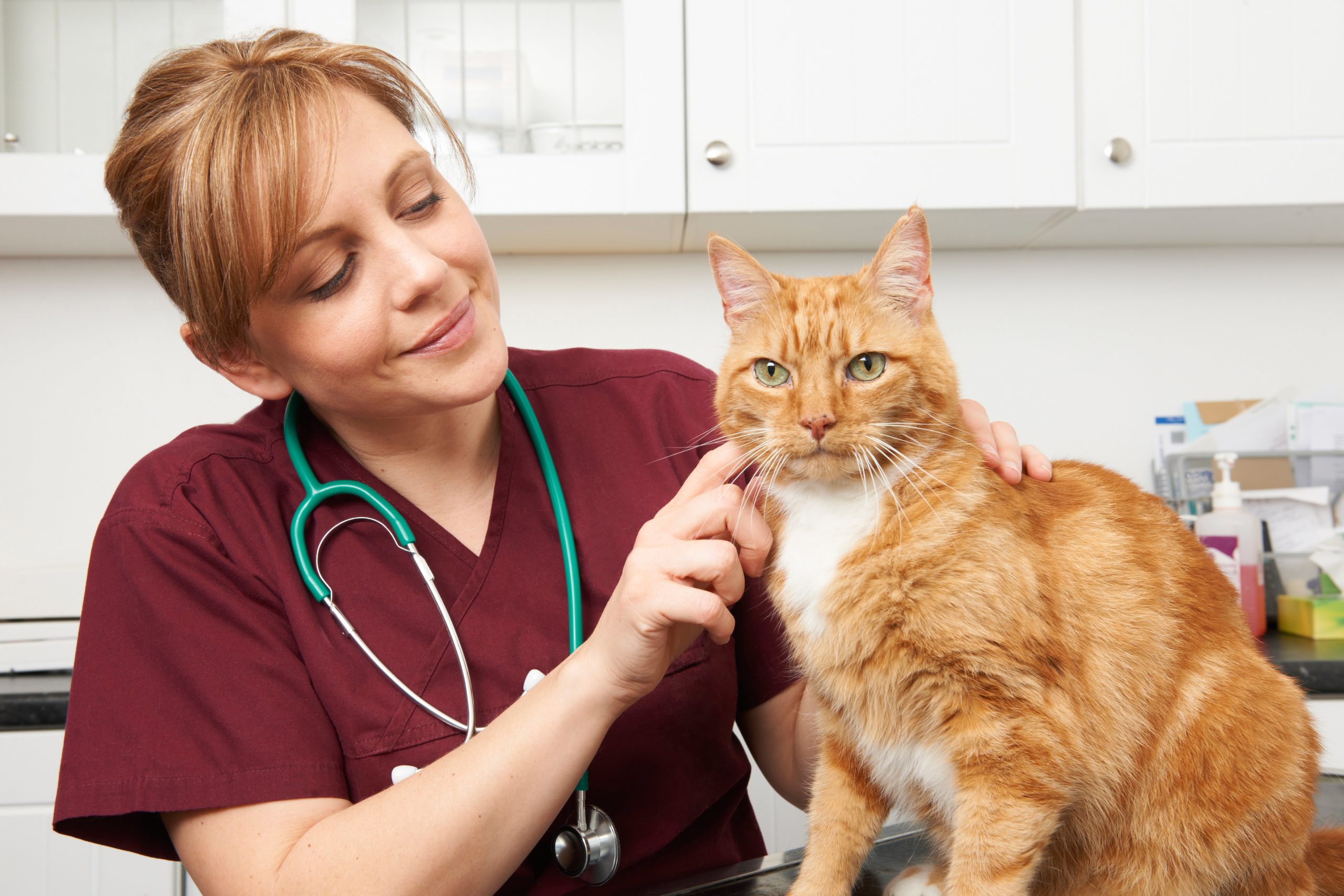Dreamstime.com

Pets enrich our lives in countless ways, but pet ownership certainly does require responsibility and commitment. A cat’s basic needs aren’t that different from what we humans need — quality food, health care and personal belongings. Expenses can add up quickly, and sometimes balancing the necessities within your budget can become a juggling act.
Budgeting strategies can include savvy shopping, knowing where to look for resources — and the areas where you should never scrimp. Here are some ways to control certain costs and care for your cat —without sacrificing her health or quality of life.
Optimizing nutrition
Cat food is obviously an ongoing expense, so it may seem like choosing the cheapest food in the store is the best way to save money. “Resist the temptation to buy a store brand or a brand that isn’t a household name. In my experience, foods at the less expensive price points — especially store brands — may look like a good value,” explains Cailin Heinze, VMD, DACVN, assistant professor of nutrition at the Cummings School of Veterinary Medicine at Tufts University.
“But the basic nutritional information — including calorie information — can be difficult to track down because you usually can’t find out who actually manufacturers the food. Quality control from large well-known companies is usually better than smaller companies at a similar price point.”
“I like the big commercial brands because they have consistent sources for their food products, have nutritionists on board, conduct feeding trials and are more predictable in terms of quality control,” says Mary Labato, DVM, DACVIM, clinical professor of nephrology, urology and small animal medicine at the Cummings School.
How marketing is used
Be aware that pet food companies market to the human consumer, not the pet. The marketing hype plays on our emotions, beliefs and preferences — knowing very well that we want to give our pets the very best. However, realize that higher prices, boutique brands and trendy ingredients don’t always guarantee better food.
For example, some diets claim the inclusion of cranberries promotes urinary tract health, which can make the food look more appealing to certain consumers. “There’s no data for cats that show cranberries have any benefit for urinary tract health. You have to take the fruits and vegetables in most cat foods with a grain of salt. If they’re not listed in the first few ingredients, but are toward the middle or bottom of the list with the vitamins and minerals, then there isn’t enough of them in the diet to make a difference,” says Dr. Heinze. “They are there just to make the pet owner feel good about buying the food.”
Nutritional deficiencies
Some pricey boutique brands can be just as worrisome as the no-name brands when it comes to food quality and nutritional adequacy. “At Tufts, we published a study which looked at thiamine levels in commercially prepared cat foods; thiamine is an essential B vitamin for cats. It’s one of the most common deficiencies we see in cats eating commercial cat diets (note: overall, deficiencies are very uncommon in cats eating commercial diets). Commercial diets should have enough thiamine, but sometimes companies get it wrong,” explains Dr. Heinze. “In the study, we measured the thiamine levels in canned cat foods, and divided the samples into groups based on the size of the company. We found a number of cans didn’t have enough thiamine to meet current regulations, and all of them were from smaller companies.
“None of these were from the large multinational food companies that generally make human food and pet food diets. This is one example of why I recommend avoiding store brands and being wary of boutique companies. The diet is a good value only if it is properly formulated, manufactured and tested.”
Dr. Heinze also suggests that you try to avoid artificial colors, commonly found in less expensive foods. She says there isn’t evidence to suggest they cause health problems, but they are completely unnecessary. “The cat doesn’t care what the color is — that’s marketing for the people. I think the cat food should be what cats need, not what people want,” she emphasizes.
Cats are obligate carnivores — deriving their nutritional needs from meat-based diets — so the majority of the protein in a cat food should be an animal protein source such as chicken, lamb or beef. Dr. Heinze and Dr. Labato agree that cooked by-products and organ meat are perfectly acceptable choices for cats.
She emphasizes that there is no evidence that grain-free diets for cats are healthier than foods that contain grains, although the majority of the diet shouldn’t be grains or other carbohydrate sources. While cats don’t need grains, they can digest them. “However, it’s how all of the ingredients work together rather than each ingredient by itself that is important,” says Dr. Heinze.
Certainly quality food helps promote overall health, which can boost longevity — but too much of a good thing can have severe consequences. Feeding less food not only saves money, but it also keeps your cat healthy. “One of the biggest health conditions directly related to food is obesity. Choosing a diet with appropriate calories for your cat and feeding it an appropriate amount is probably the most important thing you can do for your cat to have long term health and save money,” says Dr. Heinze.
Dreamstime.com

Vet visits are important
Annual veterinary exams for your cat are similar to annual check-ups for a child: You shouldn’t take short cuts. The cost of an exam is much less expensive than treating a medical condition ignored for a long period of time.
“Yearly exams — especially as the cat ages and is 10 years old or older — will provide baseline information. Conditions that can be determined with a physical include heart murmurs (new or increase in intensity), changes in weight, changes in water consumption or urinating habits, color of mucus membranes which pick up early anemia, and uremic odor — the odor associated with kidney disease,” explains Dr. Labato. “Other conditions detected may include dental disease, vision problems such as cataracts or retinal detachment, external parasites, ear infections, abdominal palpation for changes in the size of kidneys, liver and intestines as well as hyperthyroidism.”
Fortunately, surgical sterilization is a one-time expense. Spaying is the surgical removal of the ovaries and uterus in female pets, and neutering is the surgical removal of the male’s testicles. Most shelters and rescue organizations spay or neuter cats and kittens before they are adopted, or provide coupons to return for the procedure at a later date. Some organizations sponsor free or low-cost spay/neuter clinics as well as vaccination clinics.
Additionally, there are local and national organizations that offer assistance to offset the costs. Your veterinarian may have a list of associations that offer assistance.
“Call your state’s veterinary medical association; they are often aware of available assistance programs,” suggests Dr. Labato. “Some state associations actually have programs that provide reimbursements to participating veterinarians.”
Feline accessories
Cats need a few basic accessories for their mental and physical health such as a scratching post for claw health, a personal sanctuary, and toys that simulate hunting and help to reduce mental boredom. Buying better quality items can save money in the long run because they usually don’t have to be replaced as frequently. However, you don’t need to spend a fortune — just get creative and use what you have. Repurposed shelves, TV stands, trays, etc. can easily transform into cat accessories.
Dr. Labato says, “One of the best sleeping and hiding boxes that my cats have was a Christmas gift from a friend. She covered a cardboard box with wrapping paper. Then she sewed a small cloth into a blanket/pillow, filled it with catnip and placed it in the bottom of the box. The cats loved it and still use it. For a scratching post, we attached an old rug scrap to a wooden post — it lasted longer than the store-bought scratching post.”
Recycle, reuse, reclaim!
Paper bags, bottle caps and the ever-popular box all make great toys. “It’s important to keep cats environmentally stimulated. Have perches to look outside to watch birds, feather toys and aluminum foil rolled into a ball. Avoid thin string, rubber bands and hair twists which could be swallowed, causing potentially fatal consequences,” says Dr. Labato.
Dr. Heinze suggests food-dispensing toys that increase activity and slow down food consumption, particularly beneficial for overweight or bored cats (see related article on page 16). There are many inexpensive ones on the market as well as DIY videos to make your own. There are oodles of DIY videos online for making cat toys, furniture and snappy accessories.
Responsible cat ownership requires a time and financial commitment; the companionship in return is priceless. With strategic planning, it is possible to provide quality care for our cats without breaking the bank. — Ramona Marek, Ms, ED




